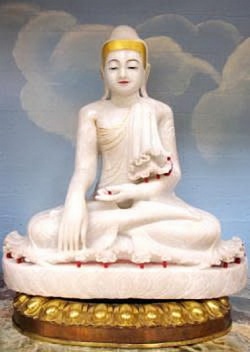True Pure Land school
True Pure Land school
浄土真宗 ( Jpn Jodo Shin-shu)
Also known as the Single-minded Practice (Ikko) school.
A school of the Pure Land teaching in Japan founded by Shinran (1173-1262), who outlines its doctrines in his work The Teaching, Practice, Faith, and Proof. Based on belief in total reliance on Amida Buddha's power instead of one's own power for achieving salvation,
the True Pure Land school rejects the monastic rules of the traditional Pure Land school, permitting its priests to eat meat, marry, and live as laymen.
Shinran stressed faith in Amida Buddha and emphasized the power of the Nembutsu, or the recitation of Amida's name; but he held that too much emphasis on repeated recitation implies a tendency to rely on one's own power rather than Amida's grace. He held that even the practitioner's longing for salvation is given by Amida.
This view contrasted clearly with that of Honen's Pure Land (Jodo) school, which taught that a believing mind is, strictly speaking, a function of one's own effort.
Shinran propagated his teachings in Kyoto and in the Kanto area of central Japan, but the school gained little influence during his lifetime.
After his death, his daughter, the nun Kakushin, and his disciples built a mausoleum in Higashiyama in Kyoto, which later became the head temple of the school and was named Hongan-ji.
In the fifteenth century, the True Pure Land school spread widely because of the efforts of Ren'nyo, the eighth chief priest of Hongan-ji.
Because of pressure from the Pure Land school and other related schools, however, the school refrained from publicly declaring itself the True Pure Land school.
Instead it used the name Single-minded Practice (Ikko) school until 1872 when the name True Pure Land school was officially adopted.See also Shinran; Teaching, Practice, Faith, and Proof, The.
